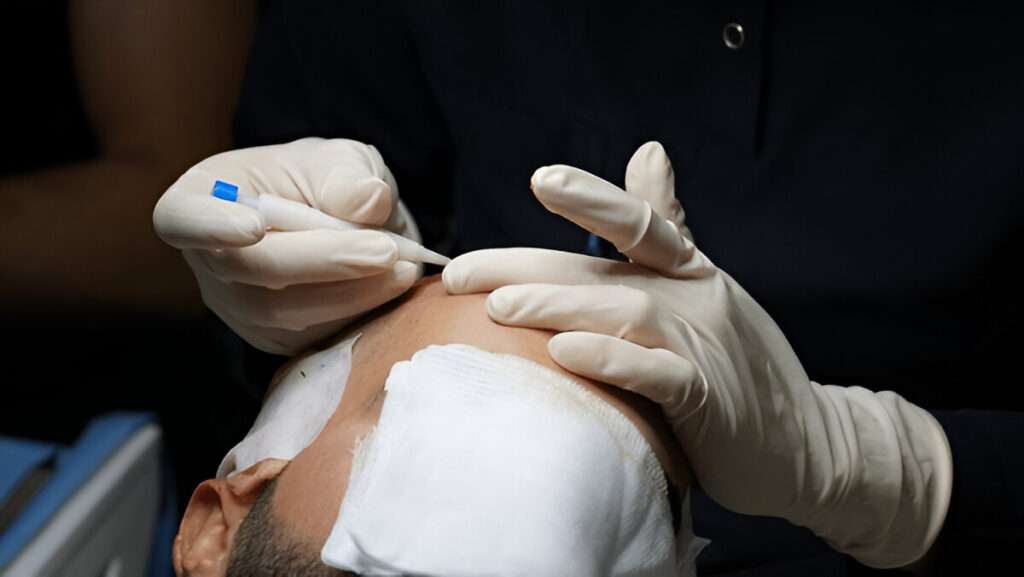Undergoing a hair transplant is a significant decision that can change the way you feel about yourself. However, the journey doesn’t end with the procedure. The recovery process is just as important as the surgery itself. If you’re planning the best hair transplant UK or anywhere in the UK, it’s essential to understand what the recovery period involves and how to ensure the best results. This complete guide will walk you through the process, from the day of your surgery to the final stages of healing.
What to Expect Immediately After the Surgery
The hair transplant procedure itself typically lasts several hours, depending on the technique used and the number of grafts required. After the surgery, you will be monitored for a short period before being allowed to go home. At this point, the initial recovery process begins.
The first 24 to 48 hours are critical. You may experience some swelling, redness, and minor discomfort around the transplanted areas. This is normal and should subside within a few days. The surgeon may prescribe painkillers or anti-inflammatory medications to help manage any pain during the early stages of recovery.
The First Week: Post-Operative Care
The first week after a hair transplant is crucial for the healing process. During this time, you’ll need to follow specific aftercare instructions provided by your surgeon to ensure optimal recovery. This may include:
- Avoiding physical activity or exercise can help prevent strain on the scalp.
- Sleeping with your head elevated can reduce swelling.
- Gently clean your scalp and apply prescribed shampoos or topical ointments to aid healing.
You may also notice that the transplanted hair sheds during the first few weeks. This shedding is completely normal and part of the natural hair growth cycle. The follicles enter a resting phase before new hair starts to grow.
At this stage, it’s essential to avoid scratching or picking at the transplanted area. Doing so can disrupt the healing process and affect the transplant’s success. Keep the area clean and moisturized as recommended.
Week 2 to 4: Initial Healing and Hair Shedding
As you move into weeks 2 to 4, the initial recovery will continue, and your scalp should begin to heal. The swelling and redness should gradually subside, and you will start to feel more comfortable. The transplanted hair follicles will shed during this period. This is a normal part of the process and doesn’t indicate that the transplant has failed.
During this time, it’s important to avoid direct sun exposure and harsh environmental factors that could irritate your scalp. Wearing a loose, soft hat when going outside can help protect the area.
Most patients begin to feel more comfortable by the end of the first month. While the transplanted follicles won’t show visible hair growth yet, the healing process is well underway. You’ll likely return to your usual activities, but make sure to follow the aftercare instructions provided by your clinic to ensure optimal results.
Month 2 to 6: Hair Growth Begins
Around two to three months after your hair transplant, you will start to see the first signs of new hair growth. Initially, the hair may appear thin and soft, but over time, it will thicken and become more substantial. This is the point when you can begin to appreciate the progress you’ve made, even though the full results are still a few months away.
During this stage, you’ll likely begin to notice small, fine hairs growing in the transplanted area. These early signs of growth are often a relief for many patients, as it confirms that the transplant was successful and the hair follicles are working.
Your surgeon may also schedule a follow-up appointment around this time to assess your progress and ensure that the healing process is on track. If there are any concerns or questions about your recovery, this is a good time to discuss them with your surgeon.
Month 6 to 12: Full Hair Growth Takes Shape
By the time you reach the six-month mark, you’ll begin to see more substantial hair growth. The hair in the transplanted area will have become thicker and denser, blending with your natural hair. While the final results may still be a few months away, you’ll start to see significant improvement in both the thickness and coverage of the transplanted hair.
During this stage, you may still experience some fine hair growth and the thickening of existing hair. The growth will continue at a steady pace, and it’s essential to maintain good hair care habits to ensure that the newly transplanted hair stays healthy.
12 to 18 Months: Final Results and Full Recovery
The final results of your hair transplant are typically visible within 12 to 18 months after the procedure. During this time, the transplanted follicles will have matured, and you’ll have a fuller, more natural-looking hairline. The hair will continue to grow just like your natural hair and will be permanent.
At this stage, your hair will blend seamlessly with the surrounding areas. The results should look natural, with no obvious signs that you’ve had a hair transplant. The transplanted hair will have fully integrated into your scalp, and you should experience a significant improvement in both appearance and confidence.
Hair Transplant Cost in the UK and Recovery
One of the most important factors when considering a hair transplant in the UK is the cost. The cost can vary widely depending on factors such as the clinic’s location, the surgeon’s experience, the number of grafts required, and the method used.
In London, the cost can range from £3,000 to £10,000 or more, depending on the extent of the transplant and the clinic’s reputation. While cost is an important consideration, remember that quality should always come first. The best hair transplant UK clinics will offer not only competitive pricing but also advanced techniques and experienced surgeons to ensure optimal results.
The cost of your hair transplant should also include follow-up appointments, post-operative care, and any additional treatments you may need during the recovery process. Be sure to discuss the full cost with your surgeon during the consultation so that you can plan accordingly.
Tips for a Successful Recovery
To ensure the best possible recovery and results from your hair transplant in London, follow these essential tips:
- Follow your surgeon’s aftercare instructions carefully.
- Avoid any strenuous physical activities during the initial recovery phase.
- Protect your scalp from sun exposure and avoid scratching the transplant area.
- Attend follow-up appointments to ensure everything is healing as expected.
- Be patient—hair growth takes time, and full results may take up to 18 months.
Conclusion
The hair transplant recovery process in the UK takes time and patience, but the results can be life-changing. Understanding what to expect during each stage of recovery will help you manage your expectations and stay on track. Whether you’re recovering from a hair transplant in London or elsewhere in the UK, following your surgeon’s advice is key to achieving the best possible outcome.
The road to a fuller head of hair doesn’t happen overnight, but with proper care and patience, you can enjoy lasting, natural-looking results.
Also Read: The Hidden Impact of Sugar on Your Health






